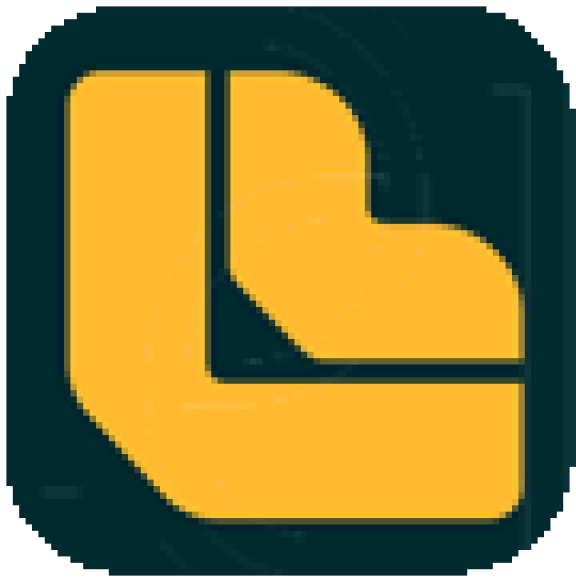What are the different types of sources of information used in research?
Typically, there are 3 basic types of information sources used in research:
- Primary Sources-These are sources that are first hand account or records of activity as they happened or were created without any interpretation or commentary. This included raw data, testimony, speeches, historic objects, or sources that provides evidence of being unique and original information about a person, event, or subject.
- Secondary Sources-These sources analyze, synthesize, evaluate, and interpret primary sources or other secondary sources. These sources are written/created after an event has occurred, and is written/created by a person who did not experience or observe the event first-hand. Some examples of Secondary Sources are articles that interpret original scholarly research results and critiques of original creative works. Secondary sources comment on and discuss previous evidence (primary source).
- Tertiary Sources- These sources provide broad overviews or condensed narratives of various topics. Tertiary sources provides context about a primary and secondary source and often provide data in a convenient form for a frame of reference for the researcher. Some examples include: textbooks, dictionaries, encyclopedias, and almanacs.
|
Secondary Sources |
Tertiary Sources |
|---|---|---|
Original journal research articles | Bibliographies | Abstracts |
Conference proceedings | Essays or reviews | Almanacs |
Theses and dissertations | Monographs | Compilations |
Technical reports | Literary criticisms or commentaries | Dictionaries |
Lab notebooks | Magazine and newspaper articles | Encyclopedias |
Patents | Biographies | Handbooks |
Interviews | Media documentaries | Fact books |
Government documents | Gazetteers | |
Archival materials | Atlases | |
Diaries, letters, memoirs, autobiographies, correspondence, and manuscripts | Chronologies | |
Speeches | Reference books | |
Photographs and film (including news film footage) | Directories | |
Artifacts | Textbooks | |
Original creative works |
What is a Scholarly Journal Article?
Scholarly articles (also known as peer-reviewed or academic articles) are created by researchers and are then reviewed by experts before being accepted for publication.

Checklist for Finding a Scholarly Article
Is this an article that was published in a journal?- Look for a journal name, and volume and issue number at the bottom of the article.
Is the language in the article more technical than a typical magazine or newspaper?-If YES, it's probably been "peer-reviewed".
Is there an abstract at the beginning of the article?-Abstracts are summaries of the content within the article.
Does the article end with a bibliography or list of works cited?-OR footnotes? Look at the bibliography/list of works cited/footnotes to see what kind of sources the author used to write the article.
Does the article tell you where the author works (and maybe their contact details)?-You can look the authors credentials up, as well as the journal itself.
Does the article's formatting look really boring?-OR does the article have advertisements? It should not have glossy colored pictures or advertisements. Scholarly articles are mainly text, that may have a few images pertaining to the articles content (Ex. data tables, figures, diagrams, etc.).
Below are some Databases that you have access to with your PCCLD Library Card.
Use these databases to find scholarly articles for your research.
Academic Search PremierThis link opens in a new window
Academic Search Premier contains full-text articles for nearly 4,500 journals including 3,600 scholarly (peer-reviewed) journals.America's Historical NewspapersThis link opens in a new window
Searchable digital facsimiles of thousands of titles from all 50 states. With eyewitness reporting, editorials, letters, advertisements, obituaries and more, this collection uniquely chronicles the evolution of American culture and daily life from 1690 to the recent past.Business Source PremierThis link opens in a new window
Provides full text for more than 2,150 journals, magazines & trade publications covering all business disciplines. It offers full text dating back to 1886. BSP's additional full text, non-journal content includes market research reports, industry reports, country reports, company profiles, and SWOT analyses.Legal Information Reference CenterThis link opens in a new window
Legal Information Reference Center offers the everyday user the necessary tools and detailed “how-to” instructions to independently address a wide-range of legal issues. This resource includes hundreds of full-text publications and thousands of legal forms. The full-text legal reference books are provided through Nolo.LISTA Library Information Science & Technology AbstractsThis link opens in a new window
LISTA indexes nearly 690 periodicals, books, research reports and proceedings on librarianship back as far as the mid-1960s.MasterFile PremierThis link opens in a new window
MasterFILE Premier provides full text for more than 1,750 general periodicals covering general reference, business, health, education, general 105,787 primary source documents, and an Image Collection of 293,480 photos, maps and flags.science, multicultural issues and much more. It also includes 86,019 biographies.Points of View Reference CenterThis link opens in a new window
Contains a balance of materials from all viewpoints, including more than 1,300 main essays, leading political magazines from both sides of the aisle, newspapers, radio & TV news transcripts, primary source documents and reference books.Psychology & Behavioral SciencesThis link opens in a new window
Provides information concerning topics in emotional and behavioral characteristics, psychiatry & psychology, mental processes, anthropology, and observational and experimental methods.Religion and Philosophy CollectionThis link opens in a new window
Religion & Philosophy Collection is an essential full-text database for theology and philosophy research. It includes hundreds of full-text journals and magazines covering many religious and philosophical topics, including world religions, religious history, political philosophy and philosophy of language.Science Reference CenterThis link opens in a new window
Science Reference Center contains full-text for hundreds of science encyclopedias, reference books, periodicals and other sources. Subjects include biology, chemistry, earth & space science, environmental science, health & medicine, history of science, life science, physics, science & society, science as inquiry, scientists, technology and wildlife.Social Science Full Text ReviewThis link opens in a new window
Covering the latest concepts, theories and methods from both applied and theoretical aspects of the social sciences, including addiction studies, ethics, public welfare, urban studies and more.Worldcat DiscoveryThis link opens in a new window
WorldCat Discovery helps people easily find and get resources available at your library and in libraries worldwide through a single search of WorldCat and familiar, authoritative e-content collections. It also connects users to your collections via popular websites where people typically start their research.
Search our Catalog!
Search for books on our online catalog for books available at PCCLD. Also, check our new app!
Dewy Decimal Classification
The Dewy Decimal System use call numbers to locate books in libraries. Usually, public libraries will only use the Dewy Decimal System for nonfiction materials, and fiction will be organized alphabetically by the authors last name.
Dewy Decimal Divisions:
000 Computers, information, & general reference
100 Philosophy & psychology
200 Religion
300 Social sciences
400 Language
500 Science
600 Technology
700 Arts & recreation
800 Literature
900 History & geography
Subject Vs. Author
When you are looking for a book on a topic, you will need to either know the subject or the author of the book that you are looking for. If you can't find books about the subject that you are looking for, library staff can help and will ask you other questions to try and narrow the search down.
Subject= finding books written ABOUT
Author= finding books written BY
Ex. Subject: Books about Abraham Lincoln (critiques, history, biographies).
Author: Books by Abraham Lincoln (memoirs, autobiographies, original research/source materials).
EXAMPLE:
Patron: I am looking for books about space
Library Staff: Ok, we'd be happy to help! What specifically about space are you trying to find? Are you looking for something in nonfiction or in fiction?
Interlibrary Loan
What if our library does not have any copies of a book (or other materials) that you are looking for? If you come across materials that you need for your research or enjoyment, the library can request it through Interlibrary Loan (ILL).
You will need to fill out a form (located on our website and through the link below) in order to request materials. Once we get the form, we look at other libraries (NOT in Pueblo, and sometimes not even in Colorado), to see if they have copies for us to borrow. This is loan that the library (PCCLD) gets on your behalf, so that you can have access to more materials from a variety of places.
ILL requests can take anywhere from several days to several weeks to complete, and sometimes the request is denied altogether due to circumstance (ex. a borrowing library only has 1 copies of a book, and will not loan it out to other libraries even though it is available for use).
Use this LINK on our website to access the request form.
What about the ISBN?
The International Standard Book Number (ISBN) is a 13-digit number that uniquely identifies books, e-books, and book-like products published internationally.
The purpose of an ISBN is to establish and identify one title or edition of a title from one specific publisher and is unique to that edition, allowing for more efficient marketing of products by booksellers, libraries, universities, wholesalers and distributors.
You do NOT use the ISBN to find a book in a library; use the call number instead. HOWEVER you may need the ISBN for your ILL request (it makes finding the book easier).
General Reference:
Library of Congress Research Guides
Reference websites compiled by the Library of Congress
"The Internet Archive, a 501(c)(3) non-profit, is building a digital library of Internet sites and other cultural artifacts in digital form. Like a paper library, we provide free access to researchers, historians, scholars, the print disabled, and the general public. Our mission is to provide Universal Access to All Knowledge."
Find unbiased pro and con information on controversial issues
Archived web pages from 1996 to the present. From the Internet Archive
Maps and Almanacs
Atlas of Historical County Boundaries
Find state and national data on historical county maps
National Historic Sites, Memorials, Military Parks and Battlefield Maps
From the University of Texas Libraries
Topographic maps and map data from the United States Geological Survey
Satellite views of over 5.9 million places
Perry-Castaneda Library Map Collection
Online maps of current interest, general and historical interest from the University of Texas Libraries
Includes almanacs, factbooks, statistical reports, and related reference tools
Almanacs on a wide range of subjects as well as an online dictionary, thesauraus, atlas, and encyclopedia
Encyclopedias, and Dictionaries
Encyclopedia.com has more than 100 trusted sources, including encyclopedias, dictionaries, and thesauruses with facts, definitions, biographies, synonyms, pronunciation keys, word origins, and abbreviations.
This site is similar in format to Wikipedia, but it is a much better free resource for research papers. All of the entries have been written and approved by an actual scholar, which means you won't have a problem when it comes time to cite sources. Featured encyclopedias cover topics like computational neuroscience, dynamical systems, computational intelligence and astrophysics.
Dictionary and thesaurus. Also has Spanish - English and medical dictionaries.
Multi-source dictionary service including sections for: Words in general, Abbreviations, Cultural, Etymology, Financial, Idioms, Law, Medical, Science, Slang. Also includes these sections: Thesaurus, Quotes, Encyclopedia, and Translator. (Dictionary.com, LLC.)
The Getty vocabularies contain structured terminology for art, architecture, decorative arts, archival materials, visual surrogates, conservation, and bibliographic materials. Compliant with international standards, they provide authoritative information for catalogers, researchers, and data providers.
Translates words or phrases both to and from English, French, Spanish, German, Italian, and Portuguese. This site will also translate entire web pages if you enter the URL.
An online dictionary that offers meanings and phrases in eight different languages.
Discovery translations and meanings for words in over ten different languages.
Demographics and Statistics
Online access to all of the data collected by the Census Bureau
From USA.gov
From the United States Census Bureau... a wide range of statistics available including demographic, housing, economic, and other statistics about American households and individuals.
Colorado State Demography Office
Find Colorado population and demography data on a wide range of subjects
Statistics from more than 100 federal agencies
Statistical resources from 60 million records on topics from energy to homicide to demographics. From the United Nations
History and Biography
U.S. Census Bureau Historical Documents and Images
Includes the original 1790 Census Act.
From the Colorado Department of Education: "Teaching the Colorado Academic Standards in social studies is supported through a wide array of free instructional resources. This webpage lists just a few of these resources and will be updated regularly." (description from website)
U.S. Indian Boarding School History
"The truth about the U.S. Indian boarding school policy has largely been written out of the history books. There were more than 523 government-funded, and often church-run, Indian Boarding schools across the U.S. in the 19th and 20th centuries. Indian children were forcibly abducted by government agents, sent to schools hundreds of miles away, and beaten, starved, or otherwise abused when they spoke their Native languages." (description from the National Native American Boarding School Healing Coalition website)
From the National Archives: The National Archives holds Federal military service records from the Revolutionary War to 1912 in the National Archives in Washington, D.C. Military service records from WWI - present are held in the National Military Personnel Records Center (NPRC), in St. Louis, Missouri. Post-WWI regimental and unit records are primarily held at the National Archives in College Park, Maryland." (description from website)
Index of Library of Congress Research Guides
"Research guides to the Library's general collections of books and periodicals, as well as general subject guides prepared by Library of Congress reference librarians, are listed." (description from the Library of Congress website)
From the Library of Congress: "A number of American Folklife Center collections are available as online presentations, and we continue to add new materials and update existing collections. Digital collections generally contain photographs, audio recordings, and manuscript materials such as field notes or logs for recordings and photos. Note that in many cases the full collection is not online, and in order to access some materials-such as administrative records for projects-you would need to visit the AFC Research Center." (description from website)
From Library of Congress Digital Collections: Documents relating to American history and creativity, including written documents, spoken-word recordings, still and moving images, prints, maps, sheet music, and musical recordings.
The American Presidency Project
"Non-profit and non-partisan, the APP is the source of presidential documents on the internet, hosted at the University of California, Santa Barbara." (description from website)
"These three documents, known collectively as the Charters of Freedom, have secured the rights of the American people for more than two and a quarter centuries and are considered instrumental to the founding and philosophy of the United States." (description from the National Archives website)
From the United States Census Bureau: "Learn about America's communities through our data profiles. They cover 100,000+ different geographies:
states, counties, places, tribal areas, zip codes, and congressional districts. For each, we cover topics like education, employment, health, and housing just to name a few." (description from website)Famous Speeches & Audio in History
From The History Channel: online audio recordings of historical speeches and other audio clips.
Links to resources available through the U.S. National Archives including America's founding documents, foreign affairs, military records and investigations, and more.
From the Federal Bureau of Investigations: "The Vault is our new FOIA Library, containing 6,700 documents and other media that have been scanned from paper into digital copies so you can read them in the comfort of your home or office.
"Included here are many new FBI files that have been released to the public but never added to this website; dozens of records previously posted on our site but removed as requests diminished; files from our previous FOIA Library, and new, previously unreleased files." (description from website)"Native Land is an app to help map Indigenous territories, treaties, and languages." (description from the Native Land Digital website)
Federal Depository Library Directory (FDLD)
"There are over 1,100 designated Federal depository libraries (FDLs) located in 50 states, the District of Columbia, the Federated States of Micronesia and U.S. territories. The U.S. Government Publishing Office (GPO) through the Federal Depository Library Program (FDLP) distributes Government information free of cost to these libraries, and the libraries provide free access for all users to this information. In addition, information specialists are available at these libraries to assist researchers with locating Federal information." (description from website)
From the National Archives: "George Washington, Benjamin Franklin, John Adams (and family), Thomas Jefferson, Alexander Hamilton, John Jay, and James Madison. Over 184,000 searchable documents, fully annotated, from the authoritative Founding Fathers Papers projects." (description from the National Archives website)
Hispanic and Latino Heritage and History in the United States
From the National Endowment for the Humanities (NEH): "Since 1988, the U.S. Government has set aside the period from September 15 to October 15 as National Hispanic Heritage Month to honor the many contributions Hispanic Americans have made and continue to make to the United States of America. Our Teacher's Guide brings together resources created during NEH-funded professional development programs, lesson plans for K-12 classrooms, and think pieces on events and experiences across Hispanic history and heritage." (description from website)
Immigration History Research Center
From the University of Minnesota: "Founded in 1965, the Immigration History Research Center (IHRC) aims to transform the way in which we understand immigration in the past and present. Along with its partner, the IHRC Archives (University Libraries), it is the oldest and largest interdisciplinary research center and archives devoted to preserving and understanding immigrant and refugee life in North America." (description from website)
The National Portrait Gallery (Smithsonian)
This is a searchable site that contains photographs, portraits, and biographical information on thousands of prominent Americans.
National Women's History Museum (Biographies)
From the National Women's History Museum ... "Women have always played an active role in history. Explore some of the historical pioneers and contemporary newsmakers that continue to impact the world."
The Nobel Foundation site includes the Nobel Prize winners from 1901 up to the current year.
Watch PBS TV Shows covering historical figures.
Eric Weisstein's World of Scientific Biography
Eric Weisstein's World of Science contains budding encyclopedias of astronomy, scientific biography, chemistry, and physics.
From the website... "The HistoryMakers is a national 501(c)(3) non-profit research and educational institution committed to preserving and making widely accessible the untold personal stories of both well-known and unsung African Americans."
From the website... "The Academy of Achievement brings young leaders face-to-face with the extraordinary visionaries and pioneers who have helped shape our world." Explore biographies of included individuals.
Primary documents and historical materials available on the Web from the Library of Congress. Browse their collection, or search for specific historical figures.
Broken into 26 topics from pre-colonial through 1999. Includes interactive features, key events of the period, maps, a video and a transcript that covers the period, as well as web links for further research. Presented by the Annenberg Lerner.
This is the site for the A&E television show Biography.. Biographies of contemporary and historical figures.
From the website... "BlackPast is dedicated to providing a global audience with reliable and accurate information on the history of African America and of people of African ancestry around the world."








